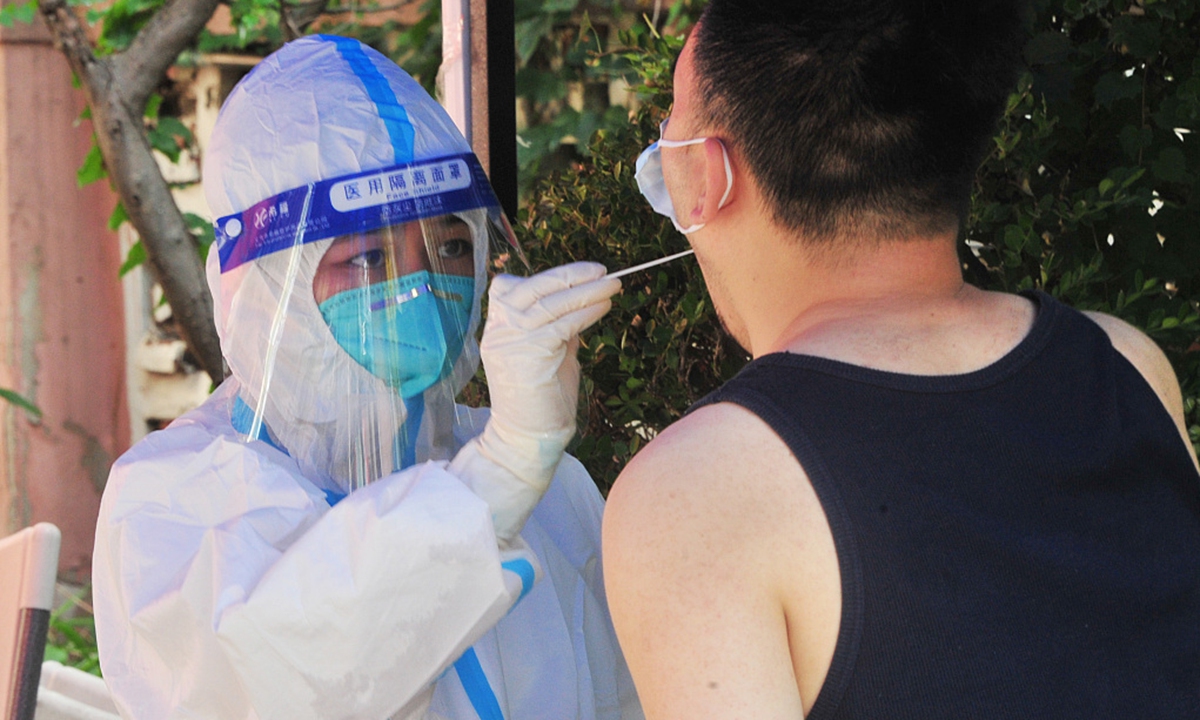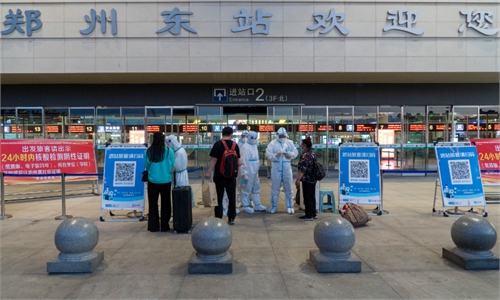Latest COVID-19 playbook revision ‘an optimization, not a relaxation,’ still valid in combating latest variants: top health experts

A medical worker takes a swab sample from a resident for nucleic acid test at a COVID-19 testing site in East China's Shanghai, July 9, 2022.
The latest edition of China's previously announced COVID-19 playbook is an optimization, not a relaxation, of the anti-COVID model, and the instructed measures are still valid in combating the latest COVID-19 variants such as Omicron BA.4 and Omicron BA.5, China's top health experts told the media on Saturday.
China has halved the amount of time that international arrivals and close contacts of COVID-19 patients must spend in centralized quarantine from 14 days to seven days and has drawn a clear standard on what constitutes medium- and high-risk areas, according to the latest, and ninth, edition COVID-19 playbook revealed in late June, which epidemiologists said will provide more balance between antivirus measures and the need to maintain people's lives and livelihoods.
Following the release of the revised playbook, some members of the public expressed concerns about whether the new measures would be as efficient to prevent epidemic outbreaks. Experts from the National Health Commission (NHC) and the China Center for Disease Control and Prevention (CDC) have addressed these concerns and explained the reasons behind the revision, according to a report released Saturday night by the Xinhua News Agency.
The changes to the COVID-19 playbook were made in consideration of the changing situation of the epidemic, the characteristics of virus mutation and the results of the pilot projects, said Liu Qing, an NHC official, according to Xinhua News Agency.
"The ninth edition of the playbook is an optimization of prevention and control measures, and in no way a relaxation," Liu said.
He said the key to the current epidemic prevention and control is to further improve scientific and precise prevention and control.
In the pilot project to optimize epidemic prevention and control measures carried out from April to May in various Chinese cities, epidemic prevention personnel around the country found that the average incubation period of Omicron mutant strains had shortened to typically two to four days; and that the vast majority of cases were detected within seven days.
China has significantly reduced the number of days required for incoming persons to isolate and close contacts no longer need to be put under centralized quarantine. This adjustment is a further optimization of the prevention and control measures based on the epidemiological characteristics of the Omicron variant strain and does not increase the risk of transmission of the infections, according to Wang Liping, a research fellow from the Chinese CDC.
Although the new strain, Omicron BA.5 subvariant, is becoming a major global epidemic strain and has caused local outbreaks in China, its pathogenicity has not changed significantly and the new edition of the playbook applies to it too, said Dong Xiaoping, Chinese CDC's chief virologist.
The new edition of the playbook brings monitoring of the virus to a higher level, reflecting a tiered and graded nucleic acid screening program, encrypting the frequency of nucleic acid testing for at-risk occupational groups, and adding antigen testing as a complementary means of outbreak surveillance, according to Xinhua.
"These measures in the ninth edition of the playbook are effective for both Omicron BA.4 and BA.5 subvariants," Dong said.
The experts also explained in detail the latest criteria for the deciding criteria of high- and medium-risk areas as well as the conditions and protocols for the application of large-scale nucleic acid testing.
Global Times


